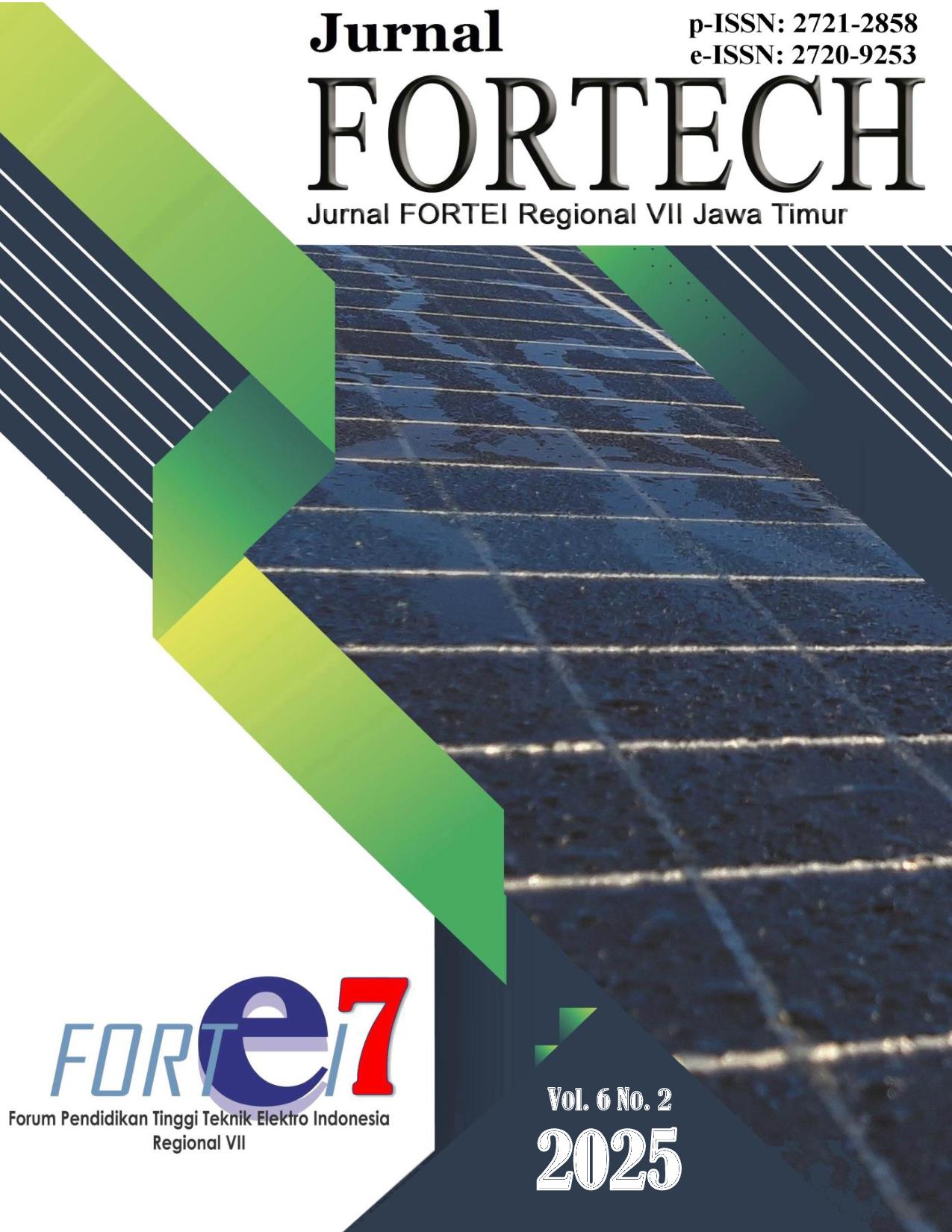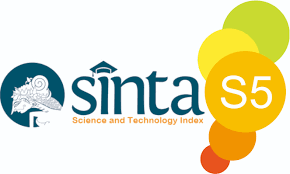Sistem Irigasi Sawah Berbasis Internet Of Things Memanfaatkan Energi Panas Matahari Dengan Panel Surya
DOI:
https://doi.org/10.56795/fortech.v6i2.6104Keywords:
Automatic Irrigation, IoT, Solar Panel, ESP32, BlynkAbstract
The rice field irrigation system based on the Internet of Things (IoT), utilizing solar energy through photovoltaic panels, is designed to improve agricultural efficiency, particularly in automating water distribution. This system consists of a soil moisture sensor, water level sensor, 12V DC water pump, servo motor for opening the irrigation gate, and an ESP32 microcontroller connected to the Blynk application to monitor and control irrigation in real-time via smartphone. Electrical energy is supplied by solar panels and stored in batteries through a solar charge controller (SCC), allowing the system to operate independently of the main power grid. Test results show that the system can accurately read soil moisture and water level, activate the pump, and open the irrigation gate according to user commands via the Blynk app. The use of renewable energy and remote control makes this system an innovative solution to support sustainable agriculture and address water scarcity in rice fields, especially during the dry season.
References
I. Z. Rahmah, Y. Prasetyo, and N. Bashit, “Analisis Sebaran Tingkat Kelembapan Tanah terhadap Lahan Sawah di Kabupaten Pati Menggunakan Citra,” vol. 25, no. 1, pp. 53–65, 2024.
Afif F. and Martin A., “Tinjauan Potensi dan Kebijakan Energi Surya di Indonesia,” J. Engine Energi, Manufaktur, dan Mater., vol. 6, no. 1, pp. 43–52, 2022.
F. Ferdyson and J. Windarta, “Overview Pemanfaatan dan Perkembangan Sumber Daya Energi Surya Sebagai Energi Terbarukan di Indonesia,” J. Energi Baru dan Terbarukan, vol. 4, no. 1, pp. 1–6, Sep. 2023, doi: 10.14710/jebt.2023.15714.
Shahzada fahad, “Capacitive Soil Moisture Sensor Arduino Circuit diagram and programming,” 21 mei 2020. Accessed: Jul. 09, 2025. [Online]. Available: https://www.electroniclinic.com/capacitive-soil-moisture-sensor-arduino-circuit-diagram-and-programming/
J. Harie Satiyadi, R. Muhamad Hudan, and A. Asrori, “Analisis Pengaruh Suhu Panel Surya Terhadap Output Panel Performance,” J. Mech. Eng., vol. 1, no. 1, pp. 42–51, 2024, doi: 10.47134/jme.v1i1.2189.
A. Bachri, A. B. Laksono, and A. M. Abdillah, “Rancang Bangun Smart Inverter dan ATS Tenaga Panel Surya Berbasis Internet of Things (IoT),” JASIEK (Jurnal Apl. Sains, Informasi, Elektron. dan Komputer), vol. 6, no. 1, pp. 23–32, 2024, doi: 10.26905/jasiek.v6i1.11169.
Viki Nanda Saputro, “Simulasi Pompa Irigasi Sawah Otomatis Memanfaatkan Energi Matahari Dengan Panel Surya,” 2022.
P. Energi Terbaharukan Melalui et al., “Pemanfaatan Energi Terbaharukan Melalui Automatic Solar Hidroponic Untuk Mengoptimalkan Agrivoltaic Di Desa Pontang Legon,” J. Has. Pengabdi. Masy. Indones., vol. 2, no. 1, pp. 1–108, Mar. 2023.
S. Van der Veer, R. Hamed, H. Karabiyik, and J. L. Roskam, “Mitigating the effects of extreme weather on crop yields: insights from farm management strategies in the Netherlands,” Environ. Res. Lett., vol. 19, no. 10, 2024, doi: 10.1088/1748-9326/ad7308.
S. Lin, J. D. Mullen, and G. Hoogenboom, “Farm-Level Risk Management Using Irrigation and Weather Derivatives,” J. Agric. Appl. Econ., vol. 40, no. 2, pp. 485–492, 2008, doi: 10.1017/s1074070800023774.
Z. Adhiluhung, C. Subiyantoro, and M. A. Nugroho, “Simulasi Kontrol Dan Monitoring Rumah Pintar Dengan Teknologi Internet of Things,” J. Inf. Syst. Manag., vol. 4, no. 1, pp. 16–21, 2022, doi: 10.24076/joism.2022v4i1.766.










